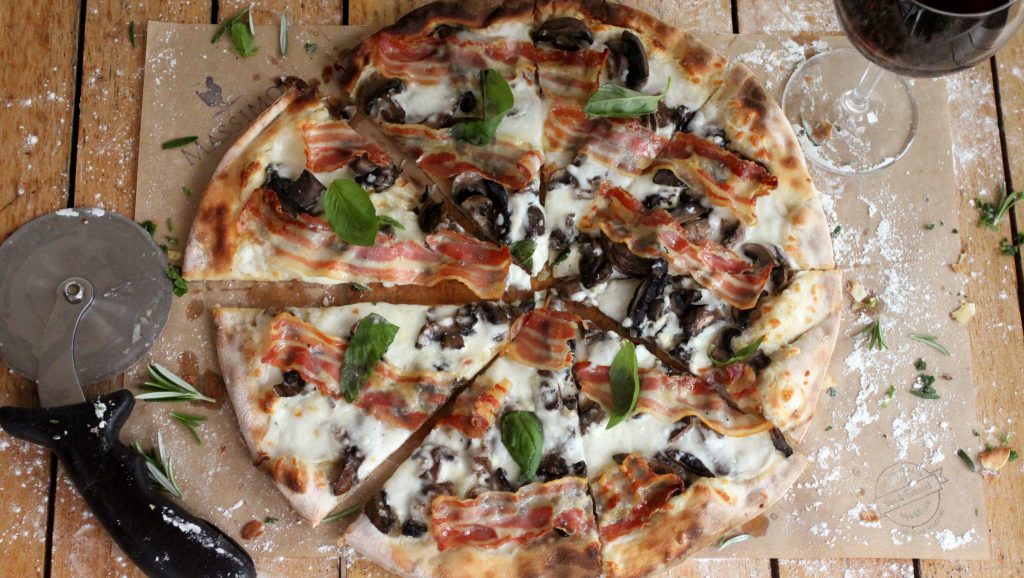The perfect pizza is a combination of a chewy or crispy base and the ideal selection of toppings. Today, we’re going to be talking about the most important of those two: the pizza base. To help us decipher what goes into creating an authentic Italian pizza base, we spoke to the team at Massimo’s in Hout Bay, Cape Town.
Pizza dough ingredients
First, like with any true Italian recipe, selecting the best and freshest ingredients are essential. Pizza dough doesn’t require many: it’s simply flour, yeast, salt and water (and possibly olive oil – depending on what texture you want). But while the ingredients are simple enough, The Silver Spoon, the Italian Bible of cooking, emphasises the importance of the quality of those ingredients. “The type of flour used impacts both the flavour and texture of the dough,” it states, “and the best pizzas begin with good-quality dough”. Massimo’s agrees that the flour is all-important, and says they opt for a local flour that is stoneground, unbleached and non-GMO. “We have been using local Eureka Mills flour since day one. We like the fact that it’s not overprocessed or bleached ‘pure white’, but if you prefer, you can use Doppio Zero flour imported from Italy,” they explain. When it comes to whether to include olive oil, Massimo’s says they prefer to exclude it as they prefer the crunchy ‘cornicione’ or border you get without it, but they advise you to include it if you are using your regular oven at home. “It will help to make the dough softer and easier to stretch by hand.”
WATCH: How to make basic pizza dough
Most recipes will tell you to knead until you have a soft, smooth dough, but what exactly does that mean? Massimo’s says the dough should spring back slowly when you push a finger into it and feel “silky”. This is where the flour is critical – the gluten it contains becomes elastic when wet and this is what gives pizza dough its iconic “stretchiness”. When you’ve reached that consistency, your dough is ready for proving – that is, you need to leave it to rise in a warm place for at least two hours. Massimo’s says they prove their dough in the morning for evening service. If you want to make your dough the day before, they recommend leaving it overnight in the fridge to delay the rising. Temperature and humidity also affect the final result. “If the weather is very hot, you will find the dough ‘melts’, so try to keep it as cool as possible.”
Baking your pizza
When you’re ready to form your base, you can choose to do this either by hand or using a rolling pin. Neapolitan-style pizza is hand-stretched and thicker around the border, while Roman-style pizza is thinner and rolled with a rolling pin. So whether you prefer a thin, slightly crunchy base or a thicker, chewier base, there’s no wrong way to enjoy your pizza.
Now all you have to do is set your oven to 220°C, add your toppings, and bake your pizza! This could take anywhere from seven to 20 minutes, depending on your toppings, so be sure to check your recipe. Remember, also, that you can enjoy your pizza with a layer of homemade tomato sauce (pizza rossa) or without (pizza bianca).
Ready to try your hand at homemade pizza? Give these topping suggestions a try! And take note of Massimo’s final words of advice: “Making pizza is not advised for a dinner party – there’s simply too much hands-on labour required when you want to chat to friends!”

